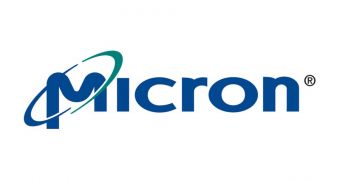Micron has been periodically announcing its invention of some new type of memory chip or another, each time enabling the manufacture of better, larger and more power efficient flash-based storage devices or memory products. This time around though, the company decided to unveil its plans for a certain type of memory that won't actually come into being for months. In fact, the so-called RLDRAM that it is working on, for all its benefits, won't launch until next year.
RLDRAM is the abbreviated form of reduced latency dynamic random access memory. Micron is currently developing the next generation of such chips, intended for use in high-performance networking applications. The upgraded RLDRAM will have a tRC of under 10 nanoseconds, an operating voltage of 1.2V or 1.35V and capacities of 512Mb and 1Gb. As for actual performance, the maximum transfer speeds achievable will be 2133 Mb/s.
"Micron's RLDRAM 3 memory meets the growing need for technology that can support the increases to network traffic as we watch Internet content consumption continue to grow," said Robert Feurle, vice president of DRAM marketing for Micron.
"Xilinx 7 series FPGAs are enabling the most advanced networking equipment to keep pace with the insatiable need for bandwidth worldwide," said Rina Raman, Senior Director, Applications and Technical Marketing at Xilinx.
"As a result of our work with Micron to support their new RLDRAM 3 technology, we are enabling our customers to develop networking platforms that meet the most rigorous infrastructure demands," she added.
"Altera's 28nm Stratix V FPGAs include new, hardened datapaths that enable high-performance and low-latency interfaces to Micron's memories," said Luanne Schirrmeister, senior director of component product marketing at Altera. "The release of RLDRAM 3 memory allows us to offer memory bandwidth as high as 1600 Mbps, the highest in the industry, at dramatically lower latency. Enabled by Micron's new memory offering and Altera's new memory interface architecture, this technical achievement is one of many pinnacles in our multi-year technical partnership with Micron."

 14 DAY TRIAL //
14 DAY TRIAL //